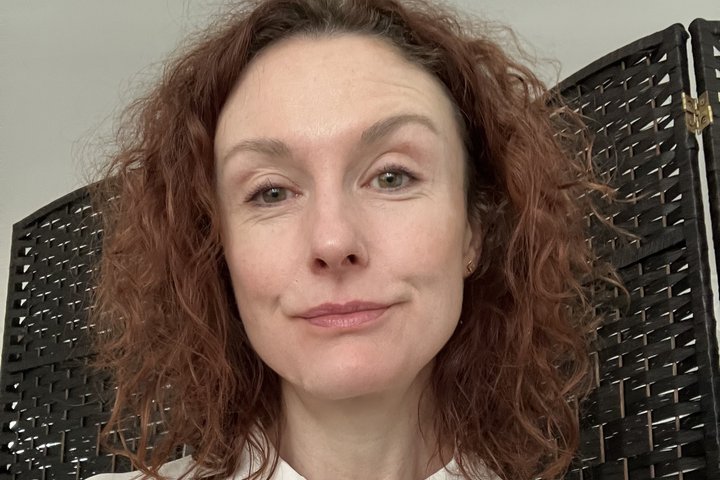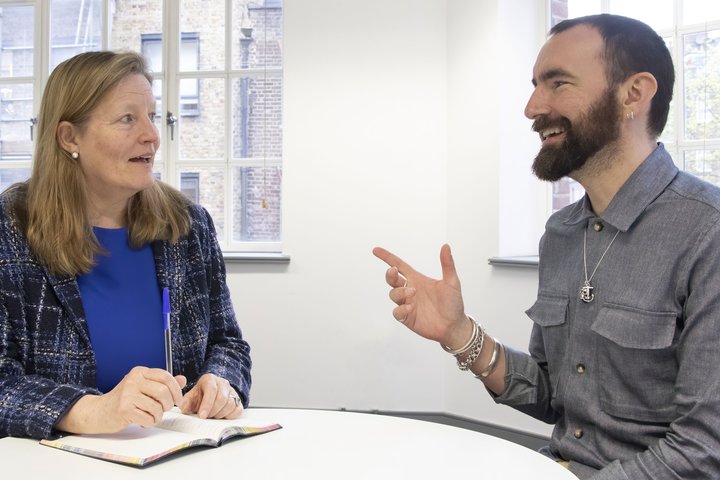Sustain your motivation at work: reflect, reassess and reset
It’s easy to feel motivated at work when you start a new role; there’s processes to learn and new people to meet. But when you’ve spent some time in a role and what was new becomes routine, how can you or the people you lead sustain the energy, and a sense of direction when feeling uninspired? RADA Business Practitioner Kate Montague shares insights.

What is motivation?
“Motivation ties in with our pleasure and reward system. When we feel motivated, we feel good, and in touch with our drive to take action,” says Kate. “Day to day, we can sustain our motivation because we're driven by short-term goals and we enjoy a sense of accomplishment and achievement.”
However, Kate suggests, feeling motivated every day is unrealistic as we experience natural fluctuations in our energy, and need time to reflect on our goals, reassess them if needed and reset. Creating space to assess your goals, and their purpose, value and impact, is key to rebooting your motivation levels.
“When people talk about increasing motivation they find that they're actually looking for a realisation of their deeper purpose, how they show up as a whole person in the team,” says Kate. “And as your motivation ties into your internal values, emotions, personality and interests, then you can become an impactful team member, and will deliver a stronger performance within the company and the team at large.”
When you manage a team and inspire and motivate them, how can you keep up your healthy creative drive? Kate shares some actionable tools you can use to recharge and leverage your motivation levels.

Factor self-regulation into your daily routine
"When you’re able to self-regulate and manage your energy, you’ll build a stronger foundation to leverage motivation", says Kate. "Breath ‘breaks’ are balancing and will support mental clarity and direction, and motivate effective productivity sessions, and interaction with others".
Practice regular check-ins by focusing your attention on what you’re thinking and feeling. Pause and find an uplifted upright posture with your head balancing squarely and comfortably on the shoulders with your feet planted on the ground. You may notice tension in your chest, neck, or shoulders.
Deepen the breath and feel how the inhale lengthens your spine and neck. When you release on the exhale, feel how your abdominal muscles can also lift and lengthen. A strong uplifted posture generates energy and confidence.
Kate says: “A ‘breath break’ need only take a few minutes, and helps to melt tension, restore an inner equanimity and provide the grounding to leverage motivation.” A fuller breath and strong posture also aid mental clarity and ensure that you’re aligned with your purpose and ready to support your team with a clear intention.
Motivate your team
Take those reflection breaks that help you reset and check in with yourself and your team. Think about these key questions: Do you feel that your team has a clear sense of direction? Are they progressing with you or pulling in different directions? How would they cope if you were not there? Are you fulfilling your highest vocation with them?
Think carefully about the answers to these questions, as they will guide your next steps. Remember that each member of the team will have different goals and each will need a different level of support.
“If you can anticipate and accept that it's part of the human endeavour for motivation to fluctuate, you can head this off at the pass as a leader,” says Kate.
Don’t wait until a team member brings up a concern, says Kate. Integrate regular check-ins into your leadership style. “This is what we call ‘transformational leadership’ – a leader’s willingness to be constantly evolving, not just waiting for that last minute or for the crisis. A good leader will access that bigger, more expanded focus often to assess the needs of their team and connect.”
Connection through mentoring and coaching
Mentoring or coaching sessions create a space to get to the heart of your team member’s goals and motivation. “Make sure regular mentoring and coaching is in place so that you can keep in touch with what your team really wants, what drives them, and how they can add value,” says Kate.
“I think about the times in my life when I wasn't able to hold my own intention. There were a few mentors along the way who were able to hold it for me, until I was ready to really step into it and embrace it. A leader who can continue to validate the gifts and talents and skillset of the person and remind them of their value when they're feeling lost and unmotivated is very powerful.”
When mentoring a member of your team, be fully present and able to really listen to create a connection. “For people, the validation of being seen and heard builds trust and empathy,” says Kate. “You don’t necessarily need to be in agreement, yet it affirms that the others’ concerns do matter.”
Listen to their perspectives and how they each hold and tell the story of the company and the brand. Sharing through story is inspiring and can provide the space for the genesis of new processes and strategies and development of company vision. These check-ins are motivating and help to assess how your team can best pull in the same direction. Invite individuals to take risks outside their usual work comfort zone. Stretching boundaries can be highly motivating and spur team confidence and growth.

Set your plan into action
Once you’ve built a solid foundation on which to ground yourself and found out what makes your team tick, it’s time to set your plan into action. Work with each team member, considering their individual goals and preferences to strategise tasks that will intrigue and excite them.
Find out what motivates your team member outside of their daily work tasks. “Gaining this insight will shed light on what makes them tick in terms of their values, deeper purpose, and application of their skill set. Open conversation that builds connection and identification can be a reset towards developing strategies and solutions that serve the individual and their presence, performance and impact within the team.”
